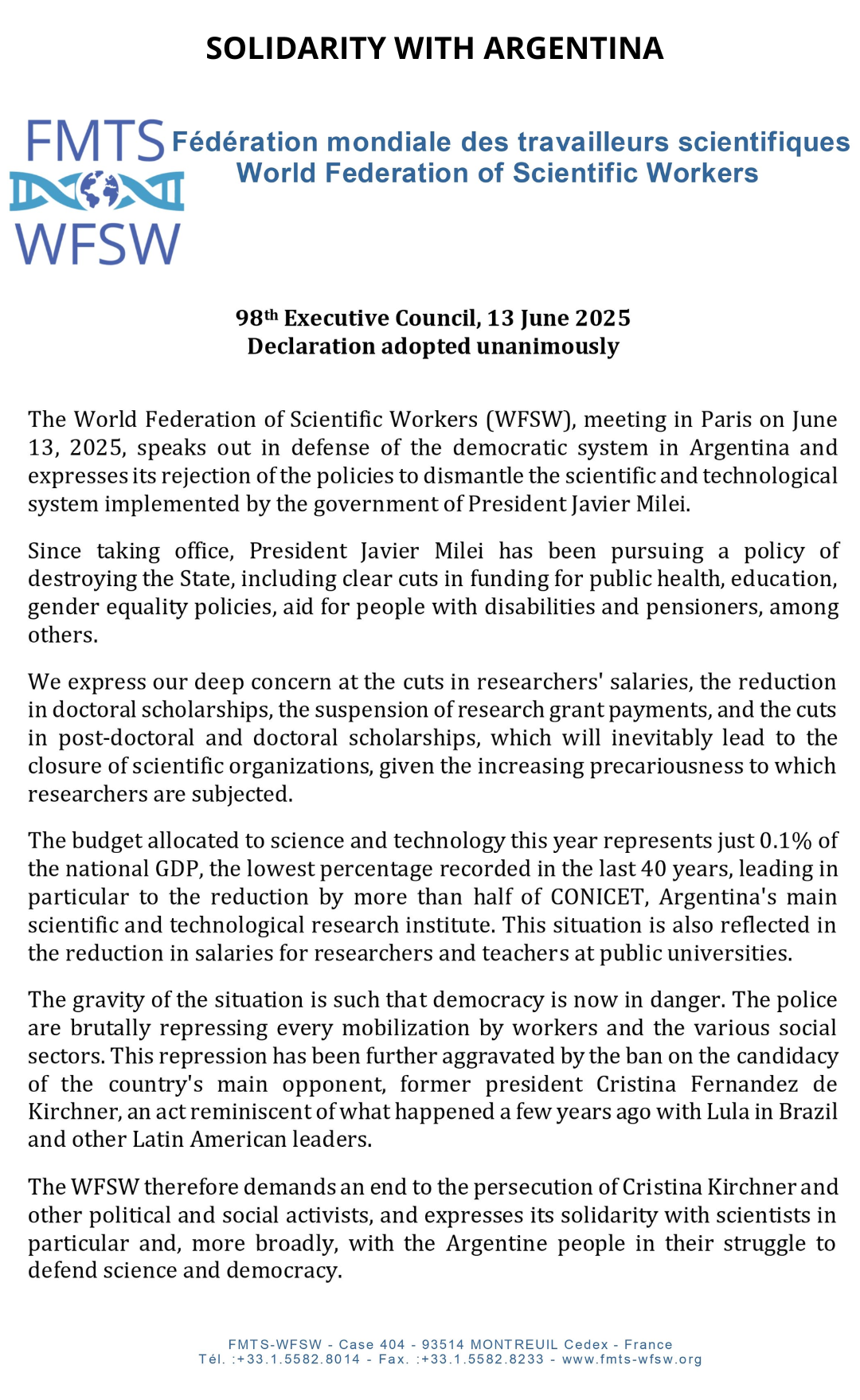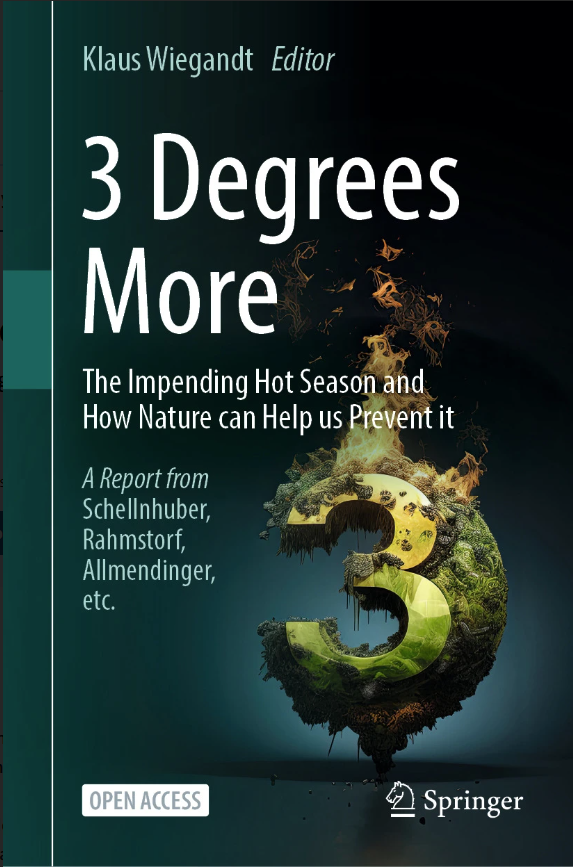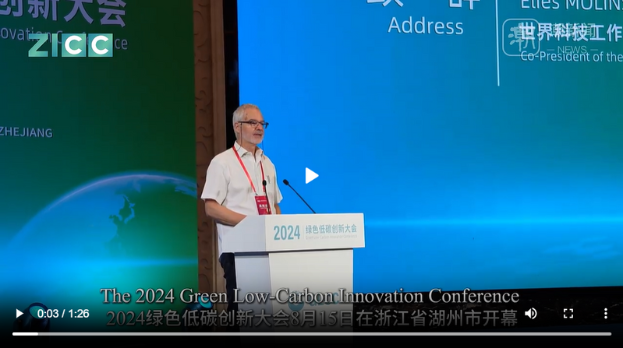Affordable and Clean Energy
UNITED NATION’S SUSTAINABLE DEVELOPMENT GOAL 7
AFFORDABLE AND CLEAN ENERGY
THE ROLE OF NUCLEAR ELECTRICITY
Frederico Carvalho
OTC-Organisation of Scientific Workers, Portugal
________________
Contribution to the Symposium:
“Scientific cooperation as driver for Green and Low-Carbon development”
organised by
WFSW-World Federation of Scientific Workers and CAST-China Association for Science and Technology
on the occasion of the
96th Meeting of the WFSW Executive Council
August 11-17, 2024, Beijing&Huzhou, People’s Republic of China
To this day civilian nuclear power plants (NPP) are mainly used for electricity generation. Around the world, as of January 1st, 2023, 411 reactors were operational with a net electrical power of 371 GW(e)[i]. In 2021, electricity generated by NPP amounted to circa 2800 TWh or 10% of the total world electricity generation in that year thus indicating an availability factor of about 85%[ii]. On the same date 58 power reactors were in construction with a total net electrical power of 600 GW. Of the 58, 20 were in construction in the PRC including 2 fast breeder reactors and 8 in India (one fast breeder). Median construction time for reactors that became operational after 2000, laid between 5 and 7 years[iii].
Twenty years ago, nuclear electricity generation amounted to 17% of the world’s total. Since then global electricity consumption went up by a factor of almost 2 ¾ from 14 kTWh to 27 kTWh. Thus, the fraction of the total supplied by nuclear power stations went down by a factor of almost 2. In the same period the contribution of wind and solar PV went from almost zero to about 10%, while hydro remained practically unchanged at circa 17% of the total. The same happened with the “dirty sources”, namely, coal and oil which stayed put at 2/3 of the total world’s electricity generation or about 65% [iv]. Thus, what the numbers mean is that electricity generation from dirty sources almost doubled in the space of 20 years.
Having mentioned above the two most populous countries of the world — India and China — it is indeed relevant to consider one major difference between the two: the per capita electricity consumption (EC) and how it evolved in the period of time under consideration. The numbers are as follows:
The per capita EC in India and that in the PRC was in 2000, respectively, 0.4MWh and 1MWh; in 2021, the numbers were, 1MWh in India and 5.9 MWh in China [v]. The latter value equals the value of the per capita EC taken globally for Europe. In the African continent — which will be home to one-fifth of the world’s population by 2030 — the per capita EC barely changed in the last two decades going from 0,5 to 0,6 MWh between 2000 and 2021. From a total of about 800 million people that have no access to electricity in the world, 600 million live in Africa [vi].
So, we have the problem of how to provide for affordable and clean energy, and, specifically, electricity, to all. To care about this goal is not only a matter of seeking social justice and combatting inequality, it may be the recognition of the necessity to ensure a viable future for humankind.
It is a fact that will surprise no one that electricity consumption needs of developed and technologically more advanced societies are steadily increasing. A case that deserves attention is that of the growing requirements of data centers associated with rapid development of AI applications. In a recent article in the New York Times, the author pointed out (quote) that “with more data centers coming online almost every week, projections about how much energy will be required to power the A.I. boom are soaring”. Adding that “one peer-reviewed study suggested A.I. could make up 0.5 percent of worldwide electricity use by 2027, or roughly what Argentina uses in a year. Analysts at Wells Fargo suggested that U.S. electricity demand could jump 20 percent by 2030, driven in part to A.I.” [vii] .
A change of “mood”
For the best part of the last three decades nuclear fission as a promising source of energy was generally ill considered an did not enjoy the favour of public opinion. For a number of reasons, it was not favoured as well by economic and political decision makers in the more developed Western countries. In the 90s of last century, due to persistent research work conducted within the international scientific community, the issue of climate change comes to the fore in the concerns of political decision-makers and is reflected in public opinion. The so-called Conference of the Parties to the United Nations Framework Convention on Climate Change (COP) has convened annually from 1995 on with an almost singular focus on variable renewable energy such as solar and wind as the solution to global warming. The fact is however that for the past 30 years the share of fossil fuels in the global energy supply has remained virtually unchanged at around 80 percent. Meanwhile, as Jeffrey Donovan, of the IAEA Department of Nuclear Energy recently pointed out “the only energy source along with hydropower that has demonstrated the ability to decarbonize electricity supply on a national scale has mostly been taboo at the global climate gathering” [viii]. He meant: nuclear energy.
In COP 28 Dubai’s meeting in December 2023, representatives of 25 participant states appear to have agreed upon the need to triple nuclear energy capacity by 2050, saying the revival of nuclear power was critical for cutting carbon emissions to near zero in the coming decades [ix].
A look at the effective implementation of commitments made in the course of past COP Meetings should lead us to be cautious when assessing the future of the present one. Notably neither the Russian Federation, heir to the USSR — the world’s pioneer in nuclear engineering — nor the PRC where 20 new power reactors are under construction have joined the declaration[x]. However, it is a fact that all but four of the 31 reactors that have begun construction since 2017 were designed by Russia or China, with China poised to become the leading nuclear power producer by 2030[xi].
A major hurdle to be overcome in the way towards a significant nuclear revival is the scale of the investment required. This will probably not be possible without radical changes in the prevailing world order — a world where peace prevails and unbiased international cooperation becomes the rule. Let us give substance to this idea using a few numbers. The 2023 2.4 trillion world military expenditure would in a rough estimation approximately equal the cost of bringing in-line 240 new 1000 MW nuclear power reactors[xii]. Following a nearly three-decade stagnation of investment in new power plants, other questions deserve consideration. Namely that of the training of a skilled and diverse workforce in large numbers as well as the need to achieve a greater effective regulatory and industrial harmonization and standardization of the industry.
We will not dwell on the question of so-called Small Modular Reactors (SMR) that according to the IAEA “could make a key contribution to achieving climate goals and energy supply security” if the challenge can be met of their deployment in time to address climate change. Again, according to the Agency more than 80 designs are currently under development in 18 countries[xiii]. Anyhow, the median construction time of the larger power units appears to be well compatible with the urgency the situation requires[xiv].
In the present context, it is of interest to draw the attention of the public to the fact that besides electricity generation, nuclear energy is an excellent source of process heat for various industrial applications including desalination, synthetic and unconventional oil production, oil refining, biomass-based ethanol production, and in the future: hydrogen production. In fact, for most major industrial heat applications, nuclear energy is the only credible non-carbon option[xv]. In 2019 there were 79 nuclear reactors used for desalination, district heating, or process heat, with 750 reactor-years of experience in these, mostly in Russia and Ukraine[xvi].
An important question frequently raised when considering the future of nuclear energy is that of the disposal of radioactive waste and spent fuel management.
Thirty years ago, on 27 June, 1954, the world’s first nuclear power station at Obninsk was connected to the Moscow grid[xvii]. Since then, according to the IAEA, almost 400,000 tonnes of spent fuel, consisting mainly of uranium, plutonium and thorium, have been discharged from operating reactors. About one third has been reprocessed and reused. The rest is kept in storage [xviii] . The annual discharges of spent fuel from the world’s power reactors total about 10,200 t [xix]. In terms of overall volume, around 95% of existing radioactive waste has very low level (VLLW) or low-level (LLW) radioactivity, while about 4% is intermediate level waste (ILW) and less than 1% is high-level waste (HLW) [xx].
In all cases the waste has to be kept safely in facilities designed for appropriate levels of containment and isolation guaranteeing adequate radiation protection of people and environment over long periods of time. Until the present-day waste is kept in surface or near-surface depository facilities adjacent or located in the immediate vicinity of operating reactors. This practice is considered temporary and requires regular surveillance and maintenance care. Envisaged for permanent final disposal are the so-called geological disposal facilities. The world’s first such repository in which nuclear waste can be safely stored for at least 100,000 years has been announced by Finland to become operational in 2025[xxi].
The risks for human health and the environment associated with an extensive utilisation of nuclear fission as an energy source for peaceful purposes tend to be negligible in comparison with risks associated with a wide range of other human activities such as mining or transportation. And they are definitely negligible if compared with the consequences for humankind and the natural world caused by the extreme events associated with climate change.
A fact is however that a number of figures that covertly or openly hold the levers of power appear to ignore or incorrectly estimate the threats human societies are confronted with. An outstanding instance is that of the fossil fuel lobby. Now and then we are confronted with the sentence that “climate change is a hoax”, so, as a particularly outspoken American aspiring president called out, “Drill, baby, drill”, for, as they say, “there is a treasure under our feet”. It is not that treasure but the treasure of an enlightened public opinion that scientific workers have to fight for.
August 15, 2024
________________________________________
Graphic Composition: OTC, Portugal
Portuguese version: “Energia Acessível e Limpa” – O Papel da Electricidade Nuclear
Pdf document (English): 96Symposium-16ENCarvalhoF.NuclearPowerAsLowCarbon
_________________________________
[i]Countries operating more than 20 units were, by that order, the USA(92), France(56), China(54), Russia(37), and South Korea (25) https://www-pub.iaea.org/MTCD/Publications/PDF/RDS-2-43_web.pdf
[ii] https://www.iea.org/data-and-statistics/data-tools/energy-statistics-data-browser?country=WORLD&fuel=Electricity%20and%20heat&indicator=ElecGenByFuel
[iii] See reference i
[iv] See reference ii
[v] The per capita EC of the USA is currently about twice that of China, whilst that of the Russian Federation is nearly 20% higher.
[vi] https://www.iea.org/regions/africa
[vii] “A.I.’s Insatiable Appetite for Energy”, David Gelles, The New York Times, July 11, 2024
See also: https://www.statista.com/chart/32689/estimated-electricity-consumption-of-data-centers-compared-to-selected-countries/
[viii] “Nuclear Power Finally Has its Moment at UN Climate Summit”, Jeffrey Donovan, Dec 6,2023 https://www.iaea.org/newscenter/news/nuclear-power-finally-has-its-moment-at-un-climate-summit
[ix] https://www.energy.gov/articles/cop28-countries-launch-declaration-triple-nuclear-energy-capacity-2050-recognizing-key, see also previous note
[x] As of July 2024, the number of units in construction in China was 25.
[xi] https://www.nytimes.com/2023/12/02/climate/cop28-nuclear-power.html
[xii] An estimated 10 billion US$ per unit
[xiii] https://www.iaea.org/newscenter/news/iaea-showcases-progress-in-nuclear-harmonization-and-standardization-initiative-to-facilitate-deployment-of-smrs
[xiv] Nuclear reactors connected to the grid in 2022 had a median construction time of 89 months or almost 7.5 years https://www.statista.com/statistics/712841/median-construction-time-for-reactors-since-1981/
[xv] https://world-nuclear.org/information-library/non-power-nuclear-applications/industry/nuclear-process-heat-for-industry
[xvi] See previous reference
[xvii] https://en.wikipedia.org/wiki/Obninsk_Nuclear_Power_Plant
[xviii] https://www.iaea.org/newscenter/news/new-iaea-report-presents-global-overview-of-radioactive-waste-and-spent-fuel-management
[xix] A typical large reactor (1 GWe) produces about 25-30 tonnes of used fuel per year
https://world-nuclear.org/information-library/nuclear-fuel-cycle/nuclear-waste/radioactive-wastes-myths-and-realities
[xx] see ref. XVIII
[xxi] https://group.vattenfall.com/press-and-media/newsroom/2023/finland-to-open-the-worlds-first-final-repository-for-spent-nuclear-fuel






